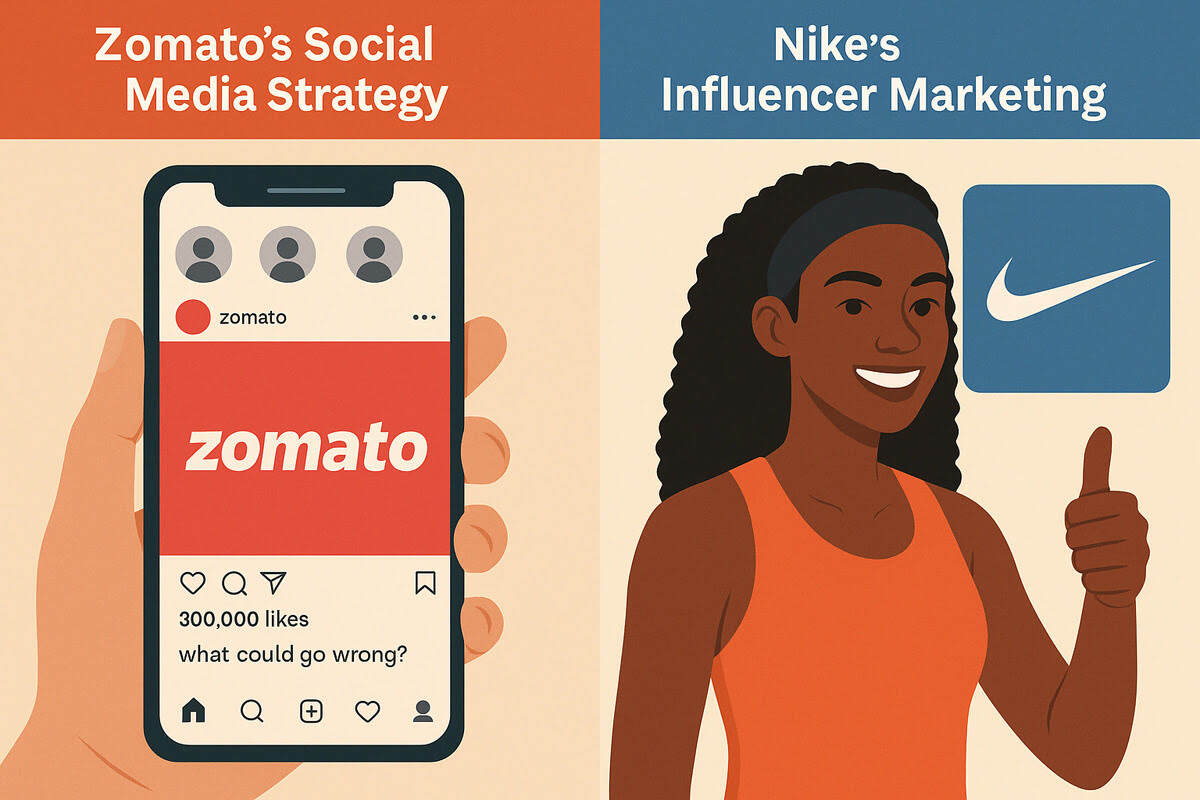Traditional Marketing vs Digital Marketing: In today’s fast-changing advertising world, the debate of traditional marketing vs digital marketing is more relevant than ever. As businesses strive to make informed marketing decisions, understanding the distinction between traditional and digital marketing helps shape more effective strategies.
This guide explores what traditional marketing is, its pros and cons, live examples, and how it compares to digital marketing, including its real-world applications. We’ll also include a clear comparison table and end with a suggestion for a top digital marketing agency to help you grow your brand.
What is Traditional Marketing?
Traditional Marketing Meaning
Traditional marketing refers to offline promotional strategies that have been used for decades. These include:
- TV and radio commercials
- Newspaper and magazine ads
- Billboards and posters
- Flyers, brochures, and direct mail
- Telemarketing
These techniques aim to reach a mass audience through physical or broadcast channels.
Advantages of Traditional Marketing
Some key advantages of traditional marketing include:
- Tangible Presence – Flyers, brochures, and banners leave a lasting physical impression.
- Local Targeting – Ideal for reaching local or regional audiences.
- Credibility – Older audiences may trust traditional ads more than digital ones.
- High Visibility – Billboards and TV ads grab broad public attention.
Disadvantages of Traditional Marketing
Despite its strengths, traditional marketing has some limitations:
- High cost (especially for TV or print ads)
- Difficult to track ROI accurately
- One-way communication with limited engagement
- Limited customization or targeting
Live Example of Traditional Marketing
Amul’s billboard campaigns across India are iconic. Their witty, region-specific hoardings consistently grab attention and build long-term brand trust — a textbook example of effective traditional marketing.

What is Digital Marketing?
Now let’s look at the modern approach: digital marketing.
Digital marketing involves promoting products or services via digital channels, such as:
- Websites and blogs
- Search engines (SEO/SEM)
- Social media platforms (Facebook, Instagram, etc.)
- Email marketing
- Mobile apps
Advantages of Digital Marketing
- Global Reach – Reach millions instantly.
- Real-time Analytics – Easily track campaign performance.
- Cost-Effective – More budget-friendly than traditional methods.
- Highly Targeted – Ads can be tailored to specific demographics, interests, and behaviors.
- Two-Way Interaction – Engage directly with users.
Disadvantages of Digital Marketing
- Requires technical skills
- Overwhelming number of tools and platforms
- Can be less trusted by older audiences
- Highly competitive online space
Digital Marketing Examples

- Zomato’s social media strategy – They use humor, memes, and trends to keep audiences engaged and build strong brand loyalty.
- Nike’s influencer marketing – Their targeted campaigns across platforms show how digital tools can amplify engagement globally.
ALSO READ: Why Use Social Media Marketing for Small Business
Traditional vs Digital Marketing: Key Differences
Here’s a side-by-side view to clarify the difference between traditional and digital marketing:
Feature | Traditional Marketing | Digital Marketing |
Medium | Print, TV, Radio, Direct Mail | Web, Social Media, Email, Mobile Apps |
Reach | Local/National | Global |
Cost | High (TV, Print) | Lower (SEO, Social Ads, Email) |
Targeting | Broad, less specific | Highly targeted and customizable |
Engagement | One-way communication | Interactive, two-way engagement |
Measurability | Hard to track | Real-time data and performance tracking |
Speed of Execution | Slow (longer lead times) | Fast (can go live in minutes) |
Personalization | Limited | Very specific and personalized |
Live Example | Amul Billboards | Zomato Social Media Strategy |
How the Market Has Shifted: From Traditional to Digital
Over the past decade, marketing has seen a rapid shift from traditional media to digital platforms. This change is driven by increased smartphone use, internet access, and the rise of social media.
Companies now focus on being digitally present, with SEO, content marketing, and social campaigns becoming essential. Still, traditional marketing remains useful for local outreach and building trust in older demographics.
Also Read: Storytelling in Advertising
Live Example – Traditional
Fevicol’s TV and print ads continue to entertain and inform while reinforcing brand loyalty among diverse age groups
Live Example – Digital
Nike’s personalized social ads and influencer collaborations are great examples of how brands build strong digital connections with younger consumers.
Which Suits Your Business Goals Best? : Traditional Marketing vs Digital Marketing
Deciding between traditional marketing vs digital marketing depends on your goals, target audience, and budget.
- If you’re targeting older consumers in a local market with a physical product, traditional marketing may be more effective.
- If you want measurable results, broader reach, and instant feedback, digital marketing is your best bet.
Often, a hybrid strategy works best — combining traditional branding with digital lead generation and engagement.
What is the Future of Marketing?

The future of marketing is dynamic, data-driven, and deeply personalized. As technology continues to evolve, so do the ways businesses connect with their audiences. Traditional approaches are no longer enough — the focus has shifted to building meaningful, real-time relationships with customers through digital platforms, AI, and automation.
In the future of marketing, artificial intelligence (AI), machine learning, and predictive analytics will play a major role in understanding consumer behavior. Brands will use this data to deliver hyper-targeted content that feels more like a conversation than a pitch. Voice search, chatbots, and virtual reality (VR) will also shape how users discover and interact with brands.
Another defining aspect of the future of marketing is the rise of ethical and purpose-driven branding. Consumers are more socially aware and expect brands to reflect their values. This means transparency, sustainability, and authentic storytelling will become essential in building trust.
Moreover, platforms like TikTok, Instagram Reels, and YouTube Shorts are transforming video into a dominant medium. As attention spans shrink, marketers must capture interest within seconds.
Ultimately, the future of marketing is all about agility, innovation, and customer-centric thinking. Businesses that adapt quickly and prioritize experience over exposure will lead the way in a competitive digital landscape.
Short FAQS- Traditional Marketing vs Digital Marketing
Q1. What is traditional marketing?
A: Traditional marketing includes offline channels such as television commercials, radio ads, print publications, billboards, and direct mail campaigns.
Q2. What is digital marketing?
A: Digital marketing involves promoting products or services through digital platforms such as social media, search engines, websites, email, and mobile apps. A great example is Zomato’s meme-driven Instagram campaigns in India.
Q3. What is the key difference between traditional and digital marketing?
A: The main difference between traditional and digital marketing lies in the medium: traditional uses offline channels, while digital uses internet-based tools. Digital marketing lets businesses target specific audiences and measure campaign performance instantly.
Q4. What are the advantages of traditional marketing?
A: Key advantages of traditional marketing include local targeting, tangible materials (like flyers or brochures), and stronger appeal to older audiences. It’s often used for building brand credibility.
Q5. Is digital marketing better than traditional marketing?
A: Not always. It depends on your business goals, audience, and budget. Digital is cost-effective and data-driven, while traditional can build brand recognition in local markets
Q6. Can traditional and digital marketing be used together?
A: Yes! Many brands use a hybrid approach. For example, Nike runs high-budget TV ads (traditional) while also using social media and influencers (digital) for broader reach.
Q7. Which is more cost-effective: traditional or digital marketing?
A: Digital marketing is generally more affordable, especially for startups. Platforms like Facebook Ads or Google Ads offer flexible budgets and detailed targeting, unlike costly TV or print ads.
Final Thoughts: The Smart Choice for Your Brand
The battle of traditional marketing vs digital marketing isn’t about picking sides — it’s about knowing when and where to use each.
Understanding the difference between traditional and digital marketing allows businesses to make smarter, more effective decisions. Both have unique benefits, and the most successful campaigns often blend the two.


